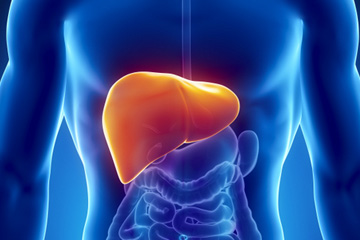
Compared to other cancers such as breast and prostate cancer, liver cancer doesn’t get a whole lot of publicity.
This is mainly because liver cancer, in most cases, is the result of another type of cancer that spreads (metastasizes) to the liver. Consequently, it gets lumped into whichever culprit cancer came first — for example, colon cancer affecting the liver.
But not all types of liver cancer are spread from another type of cancer. When that happens, it’s a very different form of the disease, so it’s important to understand the different types of liver cancer and how we can spot and ultimately treat them.
Liver cancer is generally grouped into two types: primary liver cancer and secondary (or metastatic) liver cancer.
Primary liver cancer
Primary liver cancer begins in the liver itself. Although it’s less commonly seen than secondary liver cancer, primary liver cancer rates are on the rise in the United States.Primary liver cancer is most commonly caused by Hepatitis B and C, diseases that affect the blood and, in turn, cells called hepatocytes, which are the main type of liver cell. These diseases can be contracted from a variety of sources, including sexual or blood-borne contact. This form of cancer is called hepatocellular carcinoma. It is the most common type of liver cancer throughout the developing world.
Hepatocellular carcinoma (or HCC) also can be caused by cirrhosis of the liver, which can be related to heavy alcohol consumption and is characterized by scar tissue replacing liver tissue. The rise in HCC in the United States, and particularly in Texas, however, is also being driven by our increasingly obese population and rising incidence of diabetes.
Another form of primary liver cancer – cholangiocarcinoma – results from cancerous cells originating in the bile ducts of the liver. While less common than HCC, cholangiocarcinoma is also on the rise in the United States.
Secondary liver cancer
Secondary (metastatic) liver cancer is a type of cancer that has spread to the liver from another area in the body. In the United States, this type of cancer is more common than primary liver cancer.About 50 percent of all metastatic liver cancer spreads from the colon to the liver. (Fortunately, sometimes surgery can be offered when the cancer has only spread to the liver.) Cancer also can spread to the liver from cancer of the breast, ovaries, pancreas, lungs, and other places.
The liver is particularly susceptible to the spread (metastasis) of cancer because of the liver’s role as the body’s filter. All blood in the body passes through the liver at some point. To accomplish this, two major blood supply vessels go to the liver, the hepatic artery and the portal vein. Because of the rich supply of blood and constant circulation, the liver has an increased chance that diseased cells will pass through it and take hold.
Symptoms of liver cancer
Like most cancers, liver cancer is not particularly painful. At least in the early stages, you will not feel any “liver pain.” However, a few signs suggest the disease is present, including:- Jaundice, or a yellowing of the skin and/or the whites of the eyes
- Upper abdominal pain
- Unexpected weight loss
- Loss of appetite
For primary liver cancer, tumors are usually found when the patient is being evaluated for complications due to cirrhosis or Hepatitis B or C. Blood tests for tumor markers such as AFP, CA 19-9, or CEA also can be signs of primary and secondary liver cancer.
Treating liver cancer
The best way to treat both types of liver cancer is through prevention – leading a healthy life so the disease has a lower chance of appearing at all.For the liver, particularly, this means maintaining a healthy weight and refraining from drinking in excess. To prevent liver cancer resulting from Hepatitis B or C, get a Hepatitis B vaccination. Unfortunately, there is currently no Hepatitis C vaccine. If you’re not sure if you have been vaccinated, consult your physician, who can run a blood test that determines if you’re immune. In addition, always practice safe sex and avoid blood-to-blood contact with others.
Medications have been approved in recent years for the treatment of Hepatitis C. This is an important discovery, because treatment will eliminate the risk of cirrhosis and cancer.
If liver cancer is found, the multidisciplinary team at UT Southwestern is available and can help determine the best course of treatment. You can book an appointment online or call 214-645-8300.
If the cancer is contained within the liver and is operable, a surgical oncologist can perform surgery to remove that part of the liver. Chemotherapy is used in some instances, though this treatment has not proven to be exceptionally effective against liver cancer. An alternative radiation treatment we’ve found to be effective involves implanting small radioactive beads in the affected parts of the liver (Y-90 therapy). As the radioactive beads sit in the liver, they can help reduce the size of the tumor for later removal. In some cases, beam radiation therapy also can be used.
In some selected cases, a liver transplant may be recommended, particularly when the cancer is small but there is more extensive cirrhosis. The recommendation for a liver transplant depends on the type of cancer, where it’s located, and whether other parts of the body have been affected.
Always see your primary care physician for regular checkups and be very honest with him or her about your lifestyle. We’ve come a long way in liver cancer treatment technologies, but nothing is as effective as prevention and early detection.










